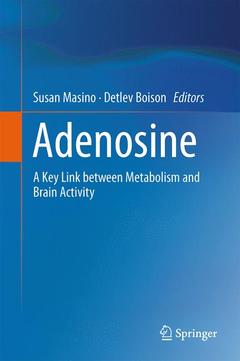Description
Adenosine, 2013
A Key Link between Metabolism and Brain Activity
Coordinators: Masino Susan, Boison Detlev
Language: English
Subject for Adenosine:
Publication date: 09-2014
680 p. · 15.5x23.5 cm · Paperback
Publication date: 08-2012
680 p. · 15.5x23.5 cm · Paperback
Description
/li>Contents
/li>Comment
/li>
Homeostasis of key metabolites and metabolic health affects all bodily systems. Not surprisingly, altered metabolic function is associated with a wide spectrum of dysfunctions in the central nervous system ? including developmental disorders, acute nervous system injury, and neurodegenerative disorders. Accordingly, metabolism-based therapies offer significant promise as new category of treatment options designed to limit, delay or reverse the disease process by reconstructing homeostatic functions. Increasingly it is appreciated that restoring metabolic health could promote normal nervous system activity, and improve behavior and cognition.
Adenosine: A Key Link Between Metabolism and Central Nervous System Activity focusses on diverse aspects of adenosine, an evolutionarily conserved homeostatic bioenergetic regulator in the central nervous system. Because of its interrelationship with ATP (adenosine triphosphate), adenosine is integral to cell metabolism. At the same time, adenosine influences neuronal activity directly via receptors, and is involved in biochemical processes related to gene expression. Thus, adenosine is uniquely placed as a reciprocal and rapid link between changes in metabolism and changes in neuronal activity, and, on a longer time scale, to changes in gene expression and long term changes in cell function. Leaders in the field feature basic research on adenosine at the cellular level in the central nervous system, and relate these findings to its recognized potential in diverse acute and chronic disorders. This comprehensive overview of adenosine also highlights emerging adenosine-based treatments and associated opportunities for central nervous system disorders.
For many years the “retaliatory metabolite” and neuromodulator adenosine has been recognized as an endogenous anticonvulsant and neuroprotective molecule
As the core molecule of ATP and of nucleic acids, adenosine forms a unique link between cell energy, gene regulation, and neuronal excitability
Emerging evidence ignites new hope for adenosine-based therapies in the central nervous system
Includes supplementary material: sn.pub/extras




